
LOADING ...
In response to evolving domestic opinion, eMedals Inc has made the conscious decision to remove the presentation of German Third Reich historical artifacts from our online catalogue. For three decades, eMedals Inc has made an effort to preserve history in all its forms. As historians and researchers, we have managed sensitive articles and materials with the greatest of care and respect for their past and present social context. We acknowledge the growing sentiments put forth by the Canadian public and have taken proactive actions to address this opinion.
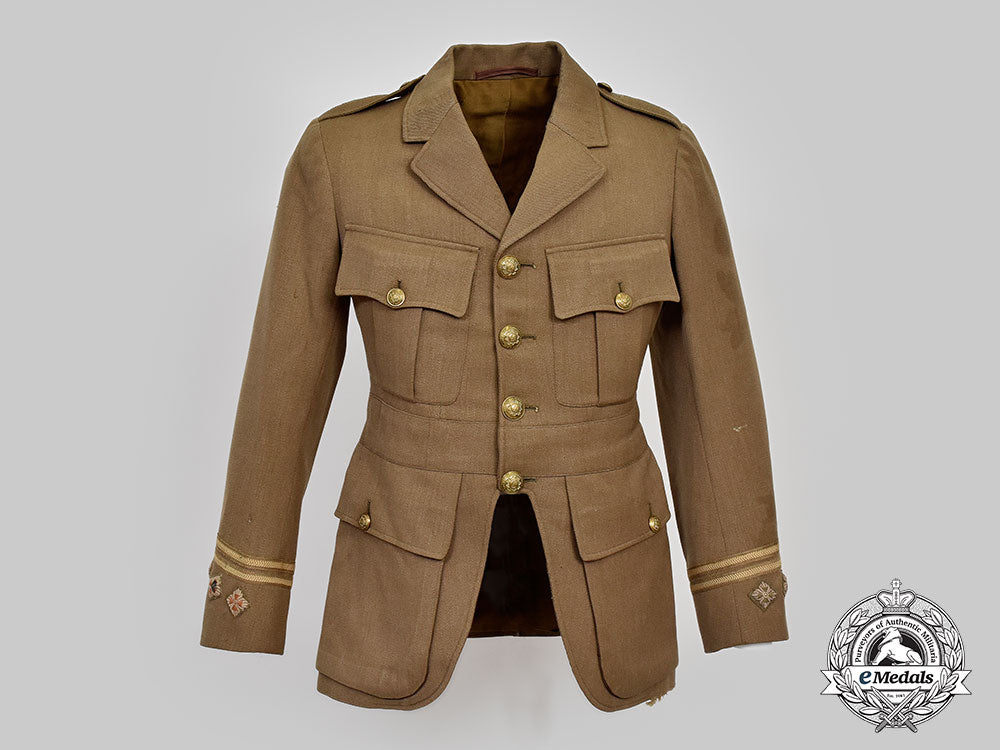
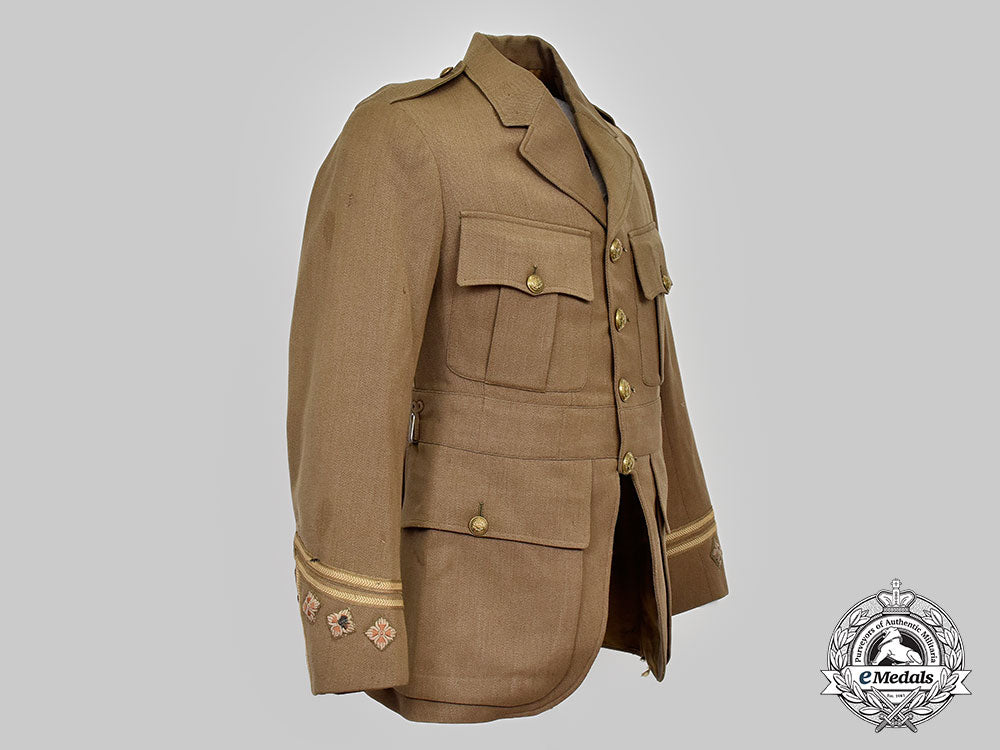
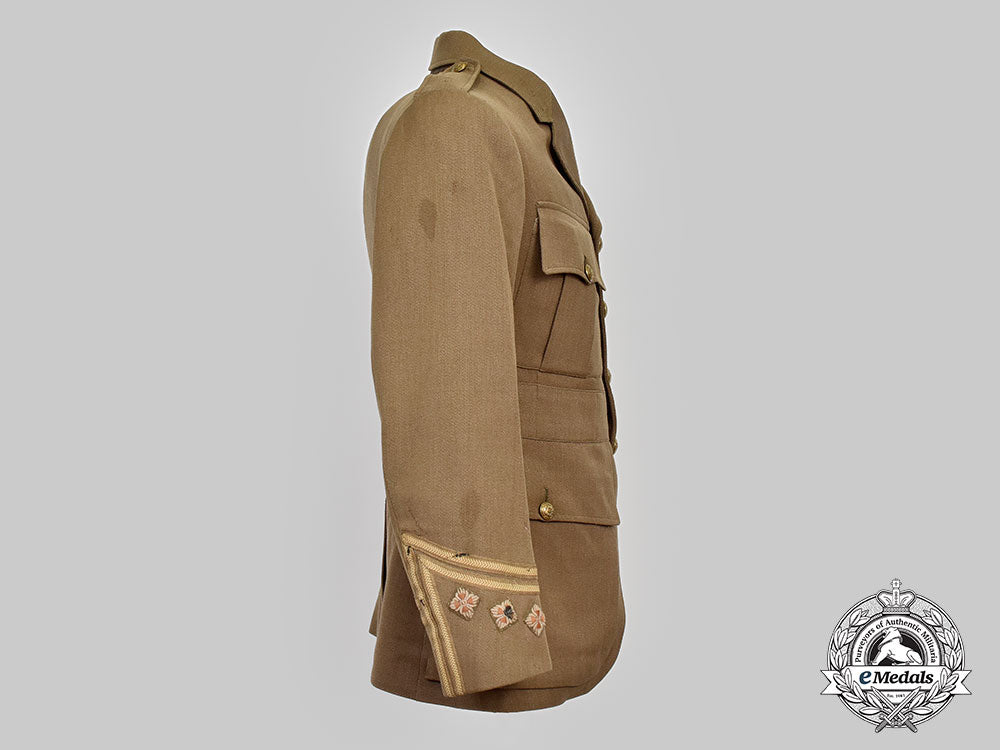
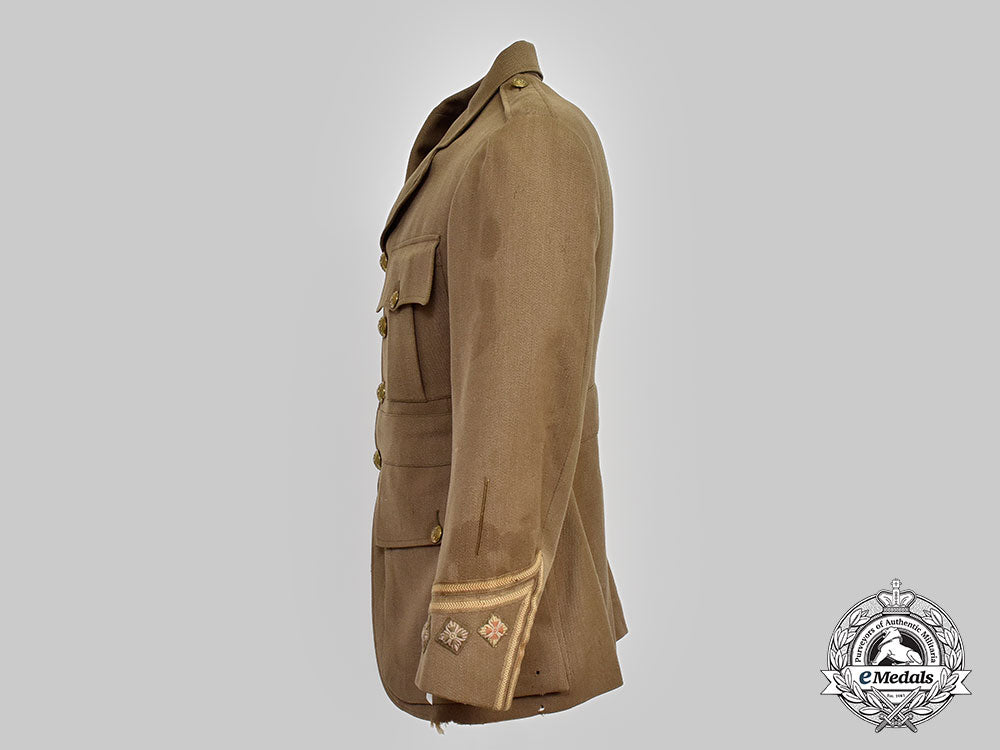
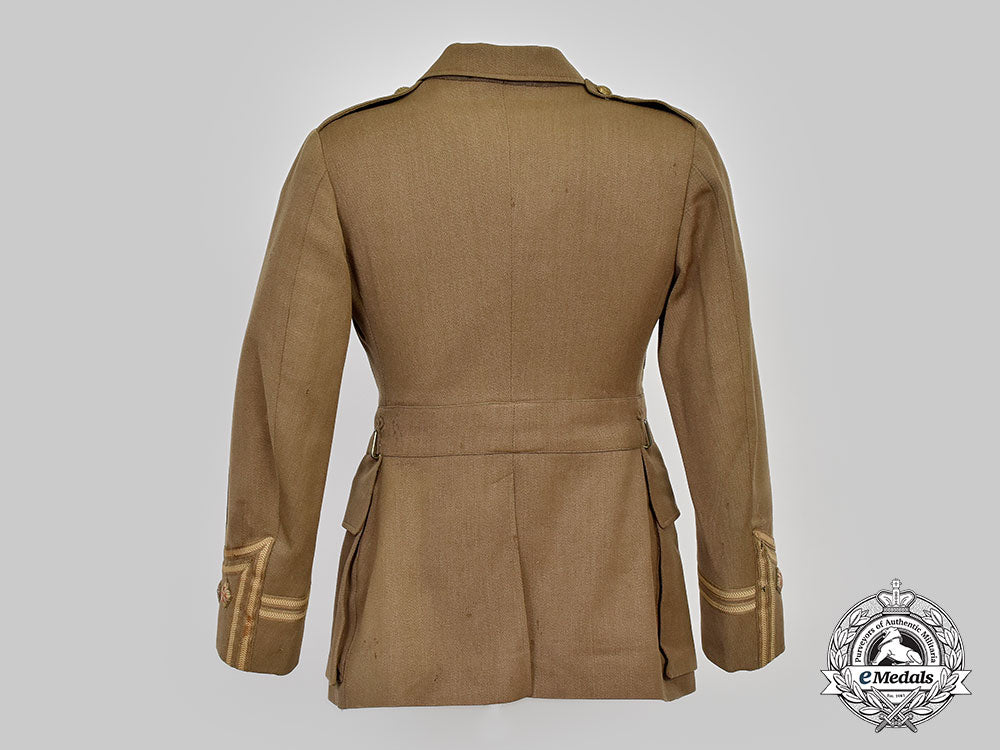
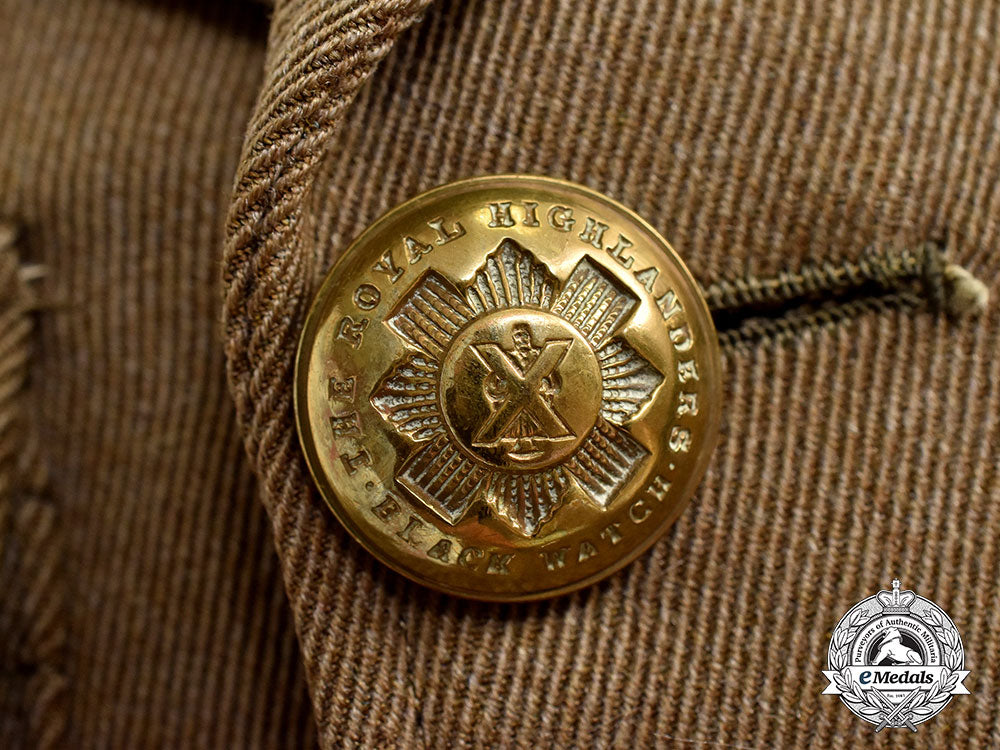
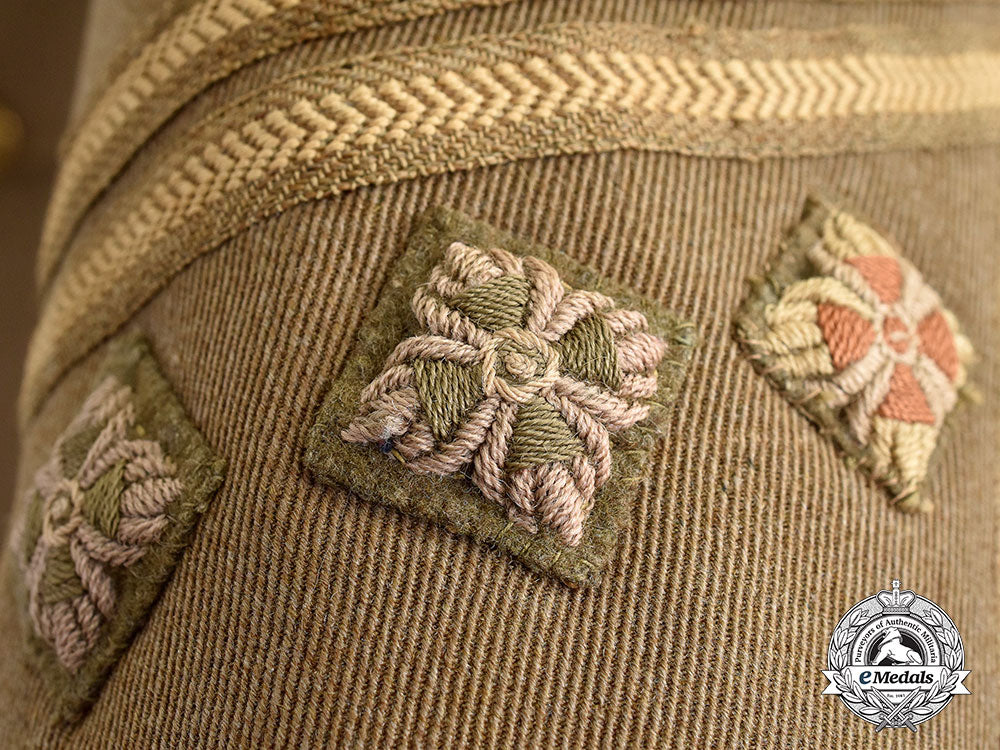
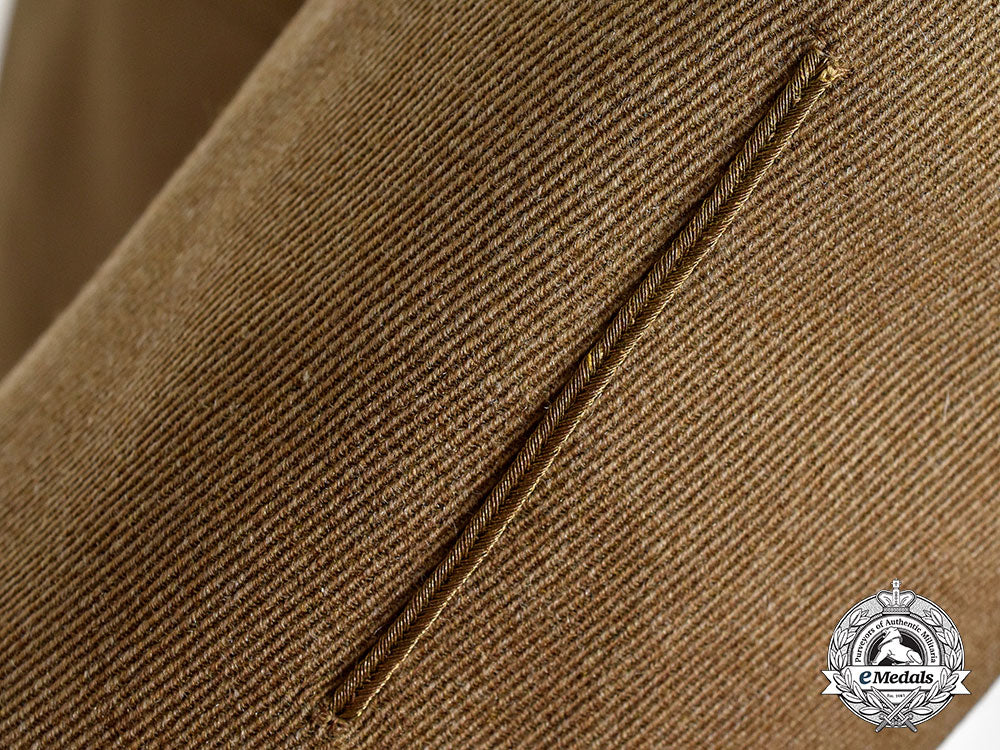
Canada, Cef. A 13Th Infantry Battalion, Royal Highlanders Officer's Tunic Of Lieutenant Victor George Gwatkin
Canada, Cef. A 13Th Infantry Battalion, Royal Highlanders Officer's Tunic Of Lieutenant Victor George Gwatkin
SKU: ITEM: M0520-2
Current Bid:
Your Max Bid:
Bid History:
Time Remaining:
Couldn't load pickup availability
Shipping Details
Shipping Details
eMedals offers rapid domestic and international shipping. Orders received prior to 12:00pm (EST) will be shipped on the same business day.* Orders placed on Canadian Federal holidays will be dispatched the subsequent business day. Courier tracking numbers are provided for all shipments. All items purchased from eMedals can be returned for a full monetary refund or merchandise credit, providing the criteria presented in our Terms & Conditions are met. *Please note that the addition of a COA may impact dispatch time.
Shipping Details
eMedals offers rapid domestic and international shipping. Orders received prior to 12:00pm (EST) will be shipped on the same business day.* Orders placed on Canadian Federal holidays will be dispatched the subsequent business day. Courier tracking numbers are provided for all shipments. All items purchased from eMedals can be returned for a full monetary refund or merchandise credit, providing the criteria presented in our Terms & Conditions are met. *Please note that the addition of a COA may impact dispatch time.
Description
Description
Exterior fabricated from a light brown cotton/wool blend, with button down epaulette straps on both shoulders, each of which is secured in place by a single small brass button bearing the Royal Highlanders "The Black Watch" insignia, maker marked "ARMFIELD & Co. Ltd. BIRMINGHAM" on their reverses, as are all the buttons on the tunic. The front has four pockets, one on each breast which have decorative straps giving them a pleated-look and two at the waist without pleats which are larger and deeper than the breast pockets, each of the four pockets with fold over button down flaps with reinforced button holes and small brass buttons bearing the Royal Highlanders "The Black Watch" insignia. The front has a vertical row of four large brass buttons bearing the Royal Highlanders "The Black Watch" insignia on the right side, facing an equal number of reinforced button holes on the left side. It is single-vented at the rear, with two metal loops on either side at the waist for placement of a belt. Both sleeves are adorned with two rows of rank piping in beige and brown embroidery, along with three pips, the right sleeve pips in light brown and copper-brown embroidery on a brownish-green wool base, the left sleeve with one pip in light brown and copper-brown embroidery on a brownish-green wool base, the other two pips in light brown, gray and greenish-brown embroidery on a brownish-green wool base. Just above the piping and pips on the left sleeve is a 75 mm long wound stripe composed of two parallel rows of copper bullion wire. The inside is lined in a brownish-green rayon, with a side-entry pocket near the opening in the left side, the inside of the pocket with a tailor's label sewn in place inscribed "JOSEPH H. FOLLETT / Civil and Military Tailor / 132 YONGE ST., TORONTO" and named to "V.G. GWATKIN / JULY 1916" in handwritten black ink, with a single hook and eye closure placed between the third and fourth button positions. The sleeves are lined in a beige rayon-cotton blend with repeating single and dual brown rules, with a 75 mm long brown cotton strap in the collar to allow for hanging upon a hook. It measures 420 mm across the shoulders x 680 mm in length, the exterior exhibiting scattered nips in the fabric, soiling on the rank insignia and the pips on the right sleeve, along with what appears to be white paint on the forearm on the left sleeve, in addition to tearing in the lining on the underside of the right waist pocket, the interior with patches of discolouration, plus mothing and tearing in the interior lining near the opening at the bottom, with edge wear on the cotton-wool exterior fabric that butts the aforementioned lining below the left waist pocket. As worn.
Footnote: Victor George Gwatkin was born on August 11, 1888 in Toronto, Ontario, the son of William Henry Gwatkin and Rose Gwatkin of 784 Robert Street in Toronto. He signed his Officers' Declaration Paper in the rank of Lieutenant with the 74th Infantry Battalion, at the Exhibition Grounds in Toronto on December 24, 1915, at the age of 27, naming his next-of-kin as his father, William Henry Gwatkin, stating he was with an Active Militia, the 36th Peel Regiment, that he had one years' military service with the 36th Peel, that his religion was Church of England and that his occupation was that of "Railway". The 74th Infantry Battalion was raised in the counties of Peel and York, Ontario under the authority of G.O. 103A, August 15, 1915. The mobilization headquarters was at Camp Niagara, Ontario. The Battalion sailed from Halifax, Nova Scotia on March 29, 1916 with a strength of 34 officers and 1,046 other ranks under the command of Lieutenant-Colonel J.M. McCausland, aboard the S.S. Empress of Britain, disembarking in Liverpool, England on the 9th. After two months in England, he went overseas to France on June 8, 1916, where he was taken on strength of the 13th Infantry Battalion, Royal Highlanders of Canada "The Black Watch" upon arrival the next day, joining them in the field on the 16th. One month after arriving in France, Lieutenant Gwatkin suffered a gun shot wound to his left hand on July 10, 1916, the doctor's report later stating that he was "wounded by a defective bomb which blew off the ring and little fingers of his left hand at (the) middle joint". His fingers were amputated at No. 10 Canadian Casualty Clearing Station, after which he was hospitalized at No. 7 Stationary Hospital, No. 11 General Hospital at Wimereux and No. 14 General Hospital at Boulogne, before being invalided to England aboard the Hospital Ship Cambria on July 13th, where he would be admitted to Royal Free Hospital in London. Due to the severity of his injuries, after two months' hospitalization in London, Lieutenant Gwatkin was granted leave to Canada on September 17, 1916. Two months later, he was struck off strength as "permanently medically unfit" on November 21, 1916. Victor George Gwatkin died on February 13, 1970 in Hamilton, Ontario, at the age of 81.
Description
Exterior fabricated from a light brown cotton/wool blend, with button down epaulette straps on both shoulders, each of which is secured in place by a single small brass button bearing the Royal Highlanders "The Black Watch" insignia, maker marked "ARMFIELD & Co. Ltd. BIRMINGHAM" on their reverses, as are all the buttons on the tunic. The front has four pockets, one on each breast which have decorative straps giving them a pleated-look and two at the waist without pleats which are larger and deeper than the breast pockets, each of the four pockets with fold over button down flaps with reinforced button holes and small brass buttons bearing the Royal Highlanders "The Black Watch" insignia. The front has a vertical row of four large brass buttons bearing the Royal Highlanders "The Black Watch" insignia on the right side, facing an equal number of reinforced button holes on the left side. It is single-vented at the rear, with two metal loops on either side at the waist for placement of a belt. Both sleeves are adorned with two rows of rank piping in beige and brown embroidery, along with three pips, the right sleeve pips in light brown and copper-brown embroidery on a brownish-green wool base, the left sleeve with one pip in light brown and copper-brown embroidery on a brownish-green wool base, the other two pips in light brown, gray and greenish-brown embroidery on a brownish-green wool base. Just above the piping and pips on the left sleeve is a 75 mm long wound stripe composed of two parallel rows of copper bullion wire. The inside is lined in a brownish-green rayon, with a side-entry pocket near the opening in the left side, the inside of the pocket with a tailor's label sewn in place inscribed "JOSEPH H. FOLLETT / Civil and Military Tailor / 132 YONGE ST., TORONTO" and named to "V.G. GWATKIN / JULY 1916" in handwritten black ink, with a single hook and eye closure placed between the third and fourth button positions. The sleeves are lined in a beige rayon-cotton blend with repeating single and dual brown rules, with a 75 mm long brown cotton strap in the collar to allow for hanging upon a hook. It measures 420 mm across the shoulders x 680 mm in length, the exterior exhibiting scattered nips in the fabric, soiling on the rank insignia and the pips on the right sleeve, along with what appears to be white paint on the forearm on the left sleeve, in addition to tearing in the lining on the underside of the right waist pocket, the interior with patches of discolouration, plus mothing and tearing in the interior lining near the opening at the bottom, with edge wear on the cotton-wool exterior fabric that butts the aforementioned lining below the left waist pocket. As worn.
Footnote: Victor George Gwatkin was born on August 11, 1888 in Toronto, Ontario, the son of William Henry Gwatkin and Rose Gwatkin of 784 Robert Street in Toronto. He signed his Officers' Declaration Paper in the rank of Lieutenant with the 74th Infantry Battalion, at the Exhibition Grounds in Toronto on December 24, 1915, at the age of 27, naming his next-of-kin as his father, William Henry Gwatkin, stating he was with an Active Militia, the 36th Peel Regiment, that he had one years' military service with the 36th Peel, that his religion was Church of England and that his occupation was that of "Railway". The 74th Infantry Battalion was raised in the counties of Peel and York, Ontario under the authority of G.O. 103A, August 15, 1915. The mobilization headquarters was at Camp Niagara, Ontario. The Battalion sailed from Halifax, Nova Scotia on March 29, 1916 with a strength of 34 officers and 1,046 other ranks under the command of Lieutenant-Colonel J.M. McCausland, aboard the S.S. Empress of Britain, disembarking in Liverpool, England on the 9th. After two months in England, he went overseas to France on June 8, 1916, where he was taken on strength of the 13th Infantry Battalion, Royal Highlanders of Canada "The Black Watch" upon arrival the next day, joining them in the field on the 16th. One month after arriving in France, Lieutenant Gwatkin suffered a gun shot wound to his left hand on July 10, 1916, the doctor's report later stating that he was "wounded by a defective bomb which blew off the ring and little fingers of his left hand at (the) middle joint". His fingers were amputated at No. 10 Canadian Casualty Clearing Station, after which he was hospitalized at No. 7 Stationary Hospital, No. 11 General Hospital at Wimereux and No. 14 General Hospital at Boulogne, before being invalided to England aboard the Hospital Ship Cambria on July 13th, where he would be admitted to Royal Free Hospital in London. Due to the severity of his injuries, after two months' hospitalization in London, Lieutenant Gwatkin was granted leave to Canada on September 17, 1916. Two months later, he was struck off strength as "permanently medically unfit" on November 21, 1916. Victor George Gwatkin died on February 13, 1970 in Hamilton, Ontario, at the age of 81.








You May Also Like
Germany, HJ. A 1938 National Trade Competition Victor’s Badge, Gold Grade in Case, By Gustav Brehmer
G60096
Italy, Republic. An Order of Merit of the Italian Republic, Grand Cross Set by Johnson, 1970
EU23677
Spain, Franco Period. An Order of Civil Merit, Grand Cross Set
EU23731
Russia, Imperial. An Order of St. Anne, II Class in Gold
EU23720
Austria, Imperial. An Order of the Iron Crown, III Class in Gold, by Rothe, c.1900
EU23723
-
Germany, HJ. A 1938 National Trade Competition Victor’s Badge, Gold Grade in Case, By Gustav Brehmer
G60096
Add to CartRegular price $3,950 USDRegular price $0 USD Sale price $3,950 USDUnit price / per -
Italy, Republic. An Order of Merit of the Italian Republic, Grand Cross Set by Johnson, 1970
EU23677
Add to CartRegular price $950 USDRegular price $0 USD Sale price $950 USDUnit price / per -
Spain, Franco Period. An Order of Civil Merit, Grand Cross Set
EU23731
Add to CartRegular price $600 USDRegular price $0 USD Sale price $600 USDUnit price / per -
Russia, Imperial. An Order of St. Anne, II Class in Gold
EU23720
Add to CartRegular price $2,950 USDRegular price $0 USD Sale price $2,950 USDUnit price / per -
Austria, Imperial. An Order of the Iron Crown, III Class in Gold, by Rothe, c.1900
EU23723
Add to CartRegular price $3,950 USDRegular price $0 USD Sale price $3,950 USDUnit price / per
Do you have a similar item you are interested in selling?
Please complete the form and our client care representatives will contact you.
Sell Item




















